Oman was never a country I thought I’d visit, but Kevin and I randomly made a stop there on a trip to Tel Aviv and Dubai, and absolutely loved our time there. Oman is considered to be one of the oldest human-inhabited countries in the world, and has four UNESCO World Heritage sites. You don’t need a lot of time to appreciate some of the highlights of the country – we spent 48 hours in Oman and were able to enjoy much of the country’s marvelous natural beauty and architecture. To help you plan your time in Oman, check out the list below of things we did while we were there. These attractions are arranged in the order we visited, as part of our 48 hours in Oman itinerary.
TIP: For a great place to stay in Muscat, check out the Hilton Garden Inn Muscat Al Khuwai. I know what you’re thinking…a Hilton Garden Inn?! But trust me when I say it was the nicest Hilton Garden Inn I’ve ever stayed at. The rooms were ultra modern, spacious, and clean…and there was a great rooftop deck where we sat and watched sunset.
Related Post: Why You Should Visit Istanbul, Turkey
Related Post: Postcards from Petra – Mini Travel Guide
Sultan Qaboos Grand Mosque
The Sultan Qaboos Grand Mosque in the capital city of Muscat is considered to be one of the most beautiful modern mosques in the world. Featuring a blend of Islamic, Middle Eastern, and Omani architectural styles, the mosque can fit over 20,000 worshippers. Many mosques typically don’t allow non-Muslim visitors to enter the prayer area, however the Sultan Qaboos Grand Mosque does! We visited early in the morning and loved being able to observe and appreciate the mosque in all its splendor.




If you are planning to visit Sultan Qaboos Grand Mosque, it’s important to know that a strict dress code is required, and arms and legs need to be completely covered. Women are also required to cover their heads and hair. When we visited, I had known about this requirement and had shown up in a scarf, long maxi skirt, and long sleeve shirt thinking I would be good to enter, however, they still wouldn’t let me in because my ankles were slightly showing under my skirt! Thankfully, there was a little shop in front of the mosque where I ended up renting a gown so that I could visit. It’s important to dress respectfully when visiting this religious establishment!

The mosque was beautiful both on the inside and out – one of my favorite things to see was the chandelier in the center of the men’s prayer hall. This is one of the world’s largest chandeliers and is made from over 600,000 Swarovski crystals! The prayer hall also features one of the world’s largest carpet as well, featuring 1,700 million knots and weighing 21,000 kilograms!


Karak Tea
After visiting the mosque, we headed to The Tea House to try some local karak tea. Karak tea is one of my favorite discoveries from this trip – it’s absolutely delicious! This steaming hot tea features a nice spicy cardamon chai flavor, and is sweetened with condensed milk, and tastes like a hug in a cup. We paired our karak tea with a plate of Omani bread with Nutella and honey spreads, and loved it as a mid-morning snack. You can dine-in or pick-up your tea to go from The Tea House, and it was fun seeing the small army of servers zipping in and out of the parking lot with trays of steaming karak tea. The most memorable part about our visit was the fact that we were the only foreigners there (wearing jeans and t-shirts), and were literally surrounded by men in white religious gowns in the café. We stuck out like a sore thumb and it would’ve made for a pretty hilarious photo.
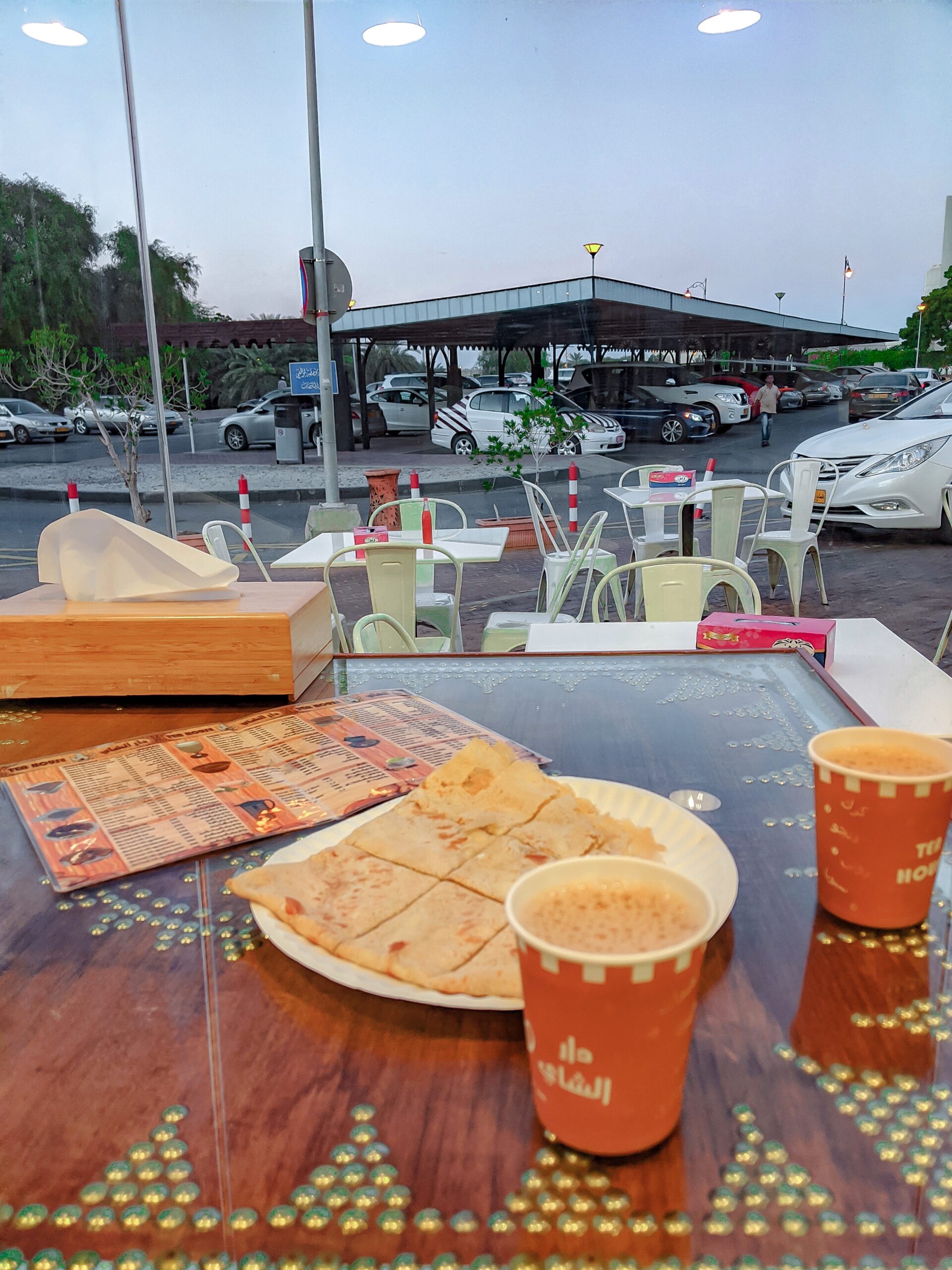
Muttrah Corniche
After enjoying our karak tea, we made our way to the Muttrah Corniche to stroll along the seafront and also visit the Muttrah Souq tourist market, which is a great place to buy souvenirs and other knick knacks. While on our walk, we made sure to keep our eyes peeled for the Sultan’s yacht (named Bin Said), and we were very excited to see it docked in the port – that thing is massive!




Shuwa Express
We concluded our first 24 hours in Oman with dinner at Shuwa Express. If you visit Oman, you definitely have to try Omani Shuwa which is marinated lamb slow cooked for hours until juicy and tender. Typically served with saffron rice or inside a warm pita, shuwa is normally reserved for special occasions, so we were lucky to visit this fast-food restaurant which focuses on making this Omani specialty into a modern everyday favorite.

Bimmah Sinkhole
The next day, we drove from Muscat to the Bimmah Sinkhole (roughly 1.5 hour drive time). The Bimmah Sinkhole is a beautiful natural pool located right off the main highway. Local legend is that the sinkhole was created when a shooting star hit the earth. Located around the sinkhole is a well-maintained park called Hawaiyat Najm with paved walking paths, pavilions for picnics, and restrooms. While we didn’t end up getting in the water, the Bimmah Sinkhole is a popular place to sunbathe and swim – we saw a ton of families playing in the water and picnicking in the area. My favorite part about the sinkhole was how green the water was – it was a bright emerald green color that really popped against the dark orange and yellow limestone surrounding it.
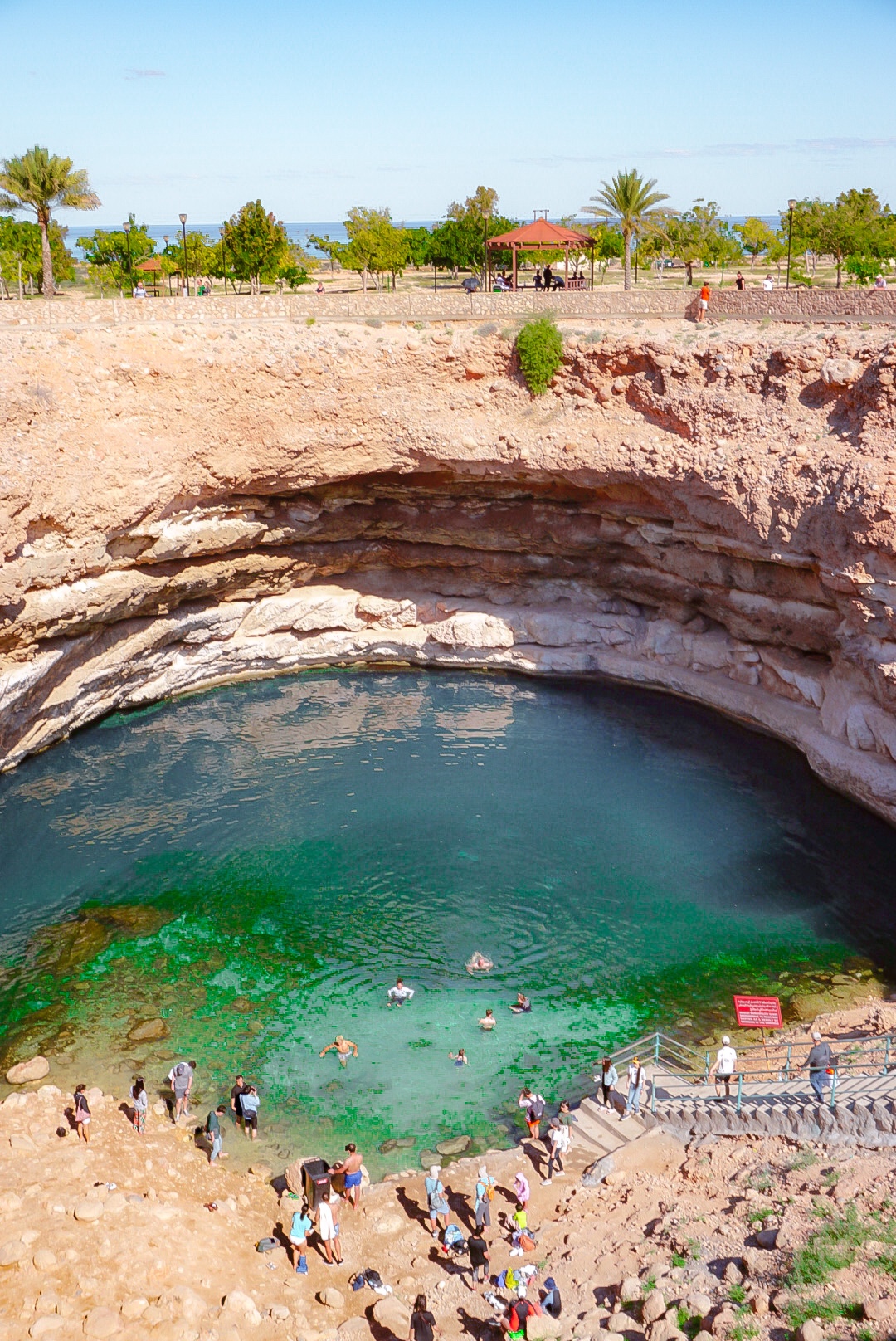

Wadi Shab
From the Bimmah Sinkhole, we made our way to Wadi Shab (1 hour drive), which was the absolute highlight of our trip to Oman. Wadi Shab is a popular wadi, which can be accessed by a short boat ride next to the parking lot, and then an easy/moderate 45-minute hike. Note – parking is free near the Wadi Shab boat rides but space is limited so go early if you can.
Note: The boat rides cost 1 Rial per person, paid in cash. You can just show up at the parking lot and there will be several boat operators in the area. Operations typically run from 8am to 5pm so make sure to check your schedules so that you can make the last boat in time and not get stuck at the wadi!

The hike itself was really fun, and we loved being able to weave in and out of different rock walls, and climb the rock boulders. We also encountered several furry animal friends along the way (several cats and a curious donkey). There were a lot of different hidden nooks and crannies to explore along the hike as well, and we were delighted to discover a small waterfall along the path. It felt like we were in some hidden paradise!



The best part of the wadi was being able to swim in perfectly clear pools of warm fresh water. There are three different pools at the wadi, with the third pool being the deepest (there is a cave you can swim to at the end of the third pool). The first pool is the most shallow and family-friendly, but also the most crowded.
Even though we visited in the middle of December, the sun was shining and the water was pleasantly warm. We spent several hours in the area playing in the water, climbing rocks to check out different viewpoints of the wadi, and sunbathing on the red rock. If you only have time to do one thing while visiting Oman, then Wadi Shab needs to be it!
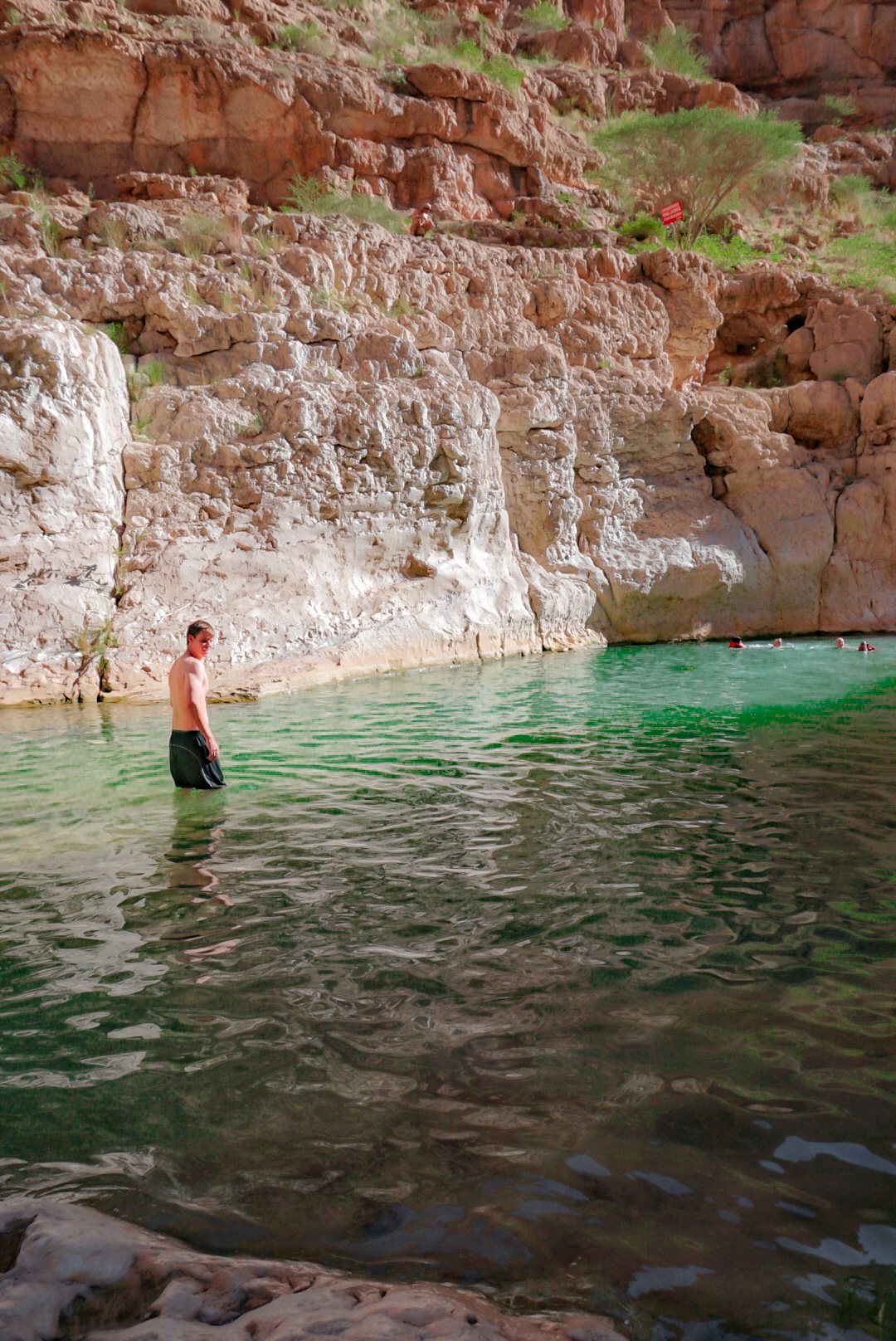

Nizwa Fort
Our final stop in Oman was the Nizwa Fort, which is a large 17th century castle roughly 1.5 hours away from Muscat. It’s a great example of old Omani architecture and also showcases many Omani defense mechanisms such as pitfalls, honey traps, dark passageways, etc. This is Oman’s most visited monument and definitely worth a stop – we visited right before closing time and toured the castle freely without a lot of crowds. The mid-afternoon sun against the peachy pink stone made for some gorgeous photos!
After the Nizwa Fort, we headed back to Muscat for dinner where we concluded our 48 hour tour of Oman at the Omani restaurant Bait Ai Luban, and celebrated the country by feasting on delicious seafood, Omani curries, spiced rice, and more shuwa (yum). I highly recommend visiting Bait Ai Luban if you’re looking for an upscale but authentic dining experience in Oman.

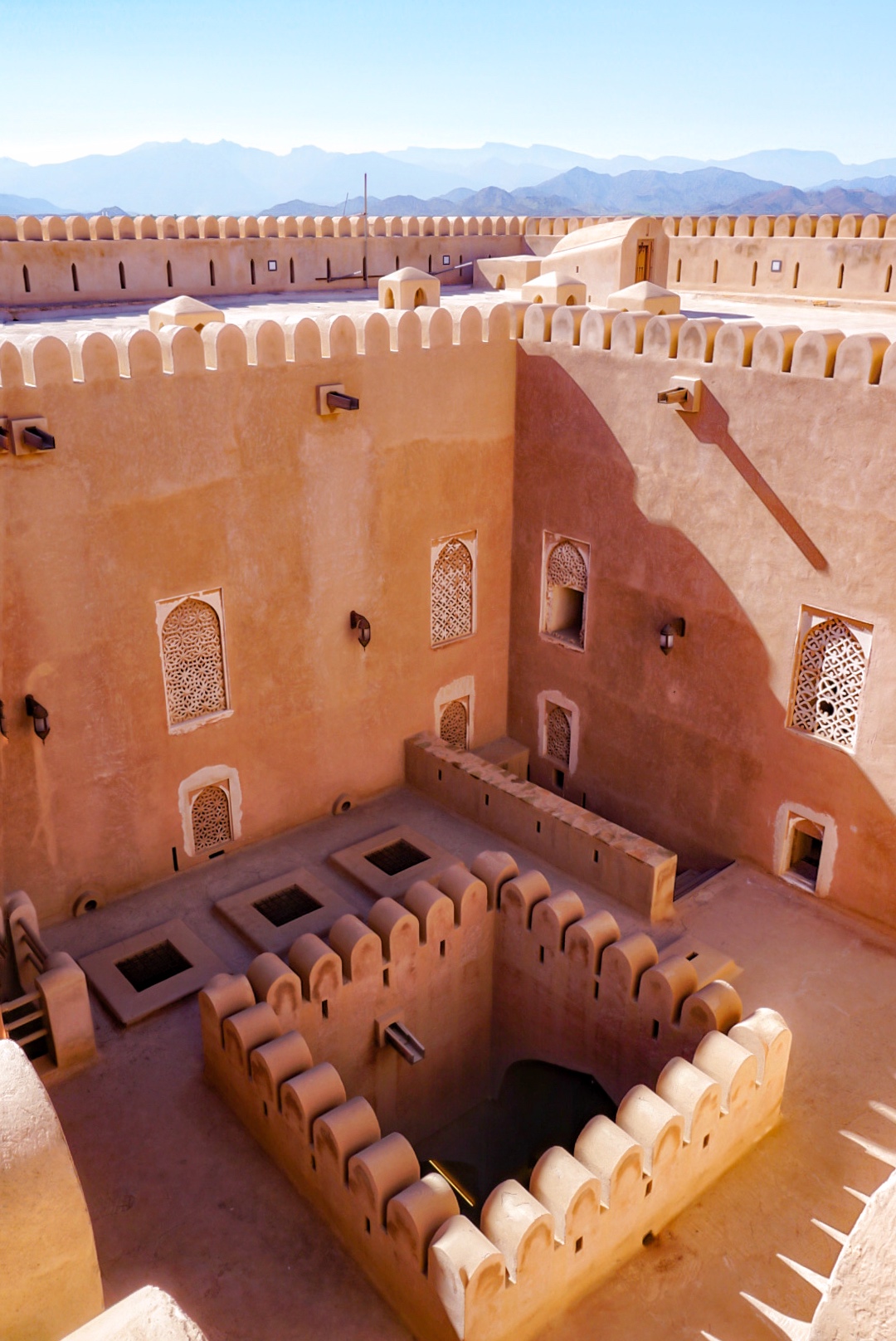

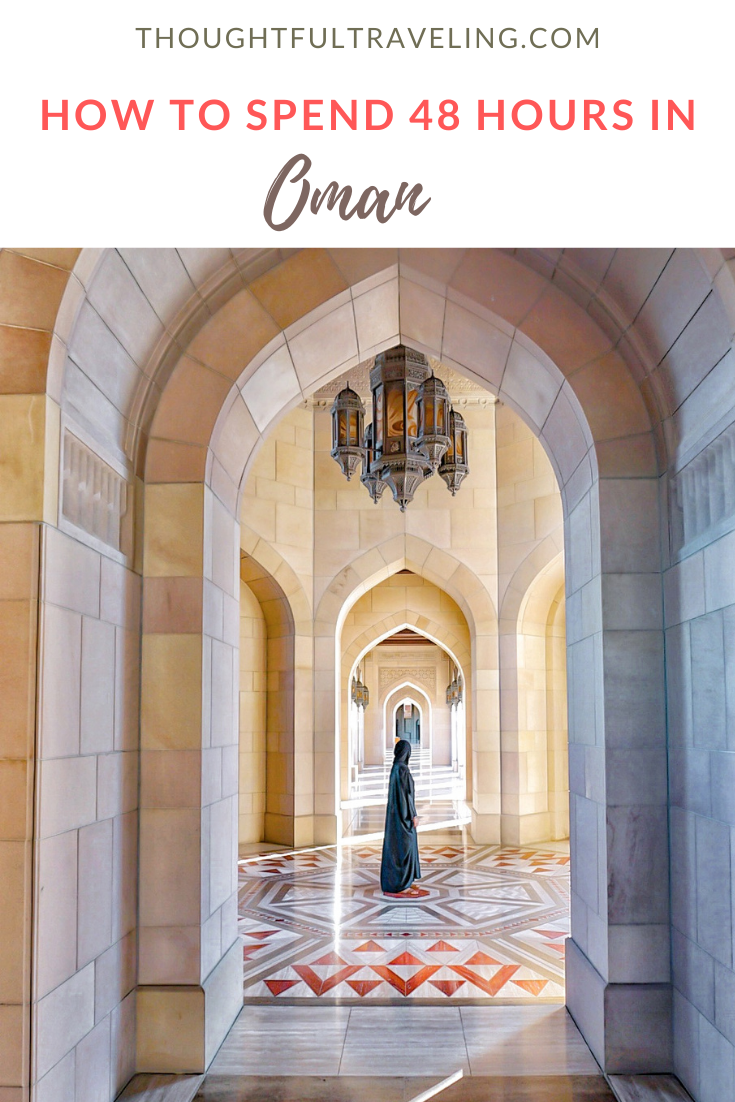
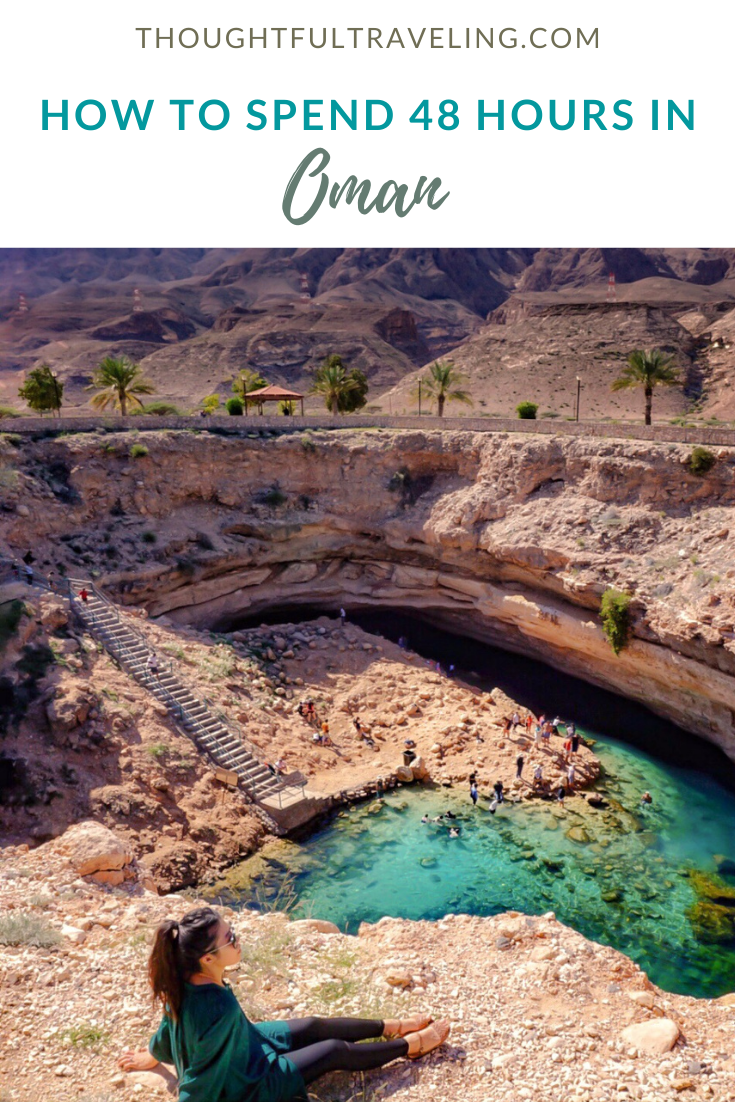
Related Post: Why You Should Visit Istanbul, Turkey
Related Post: Postcards from Petra – Mini Travel Guide

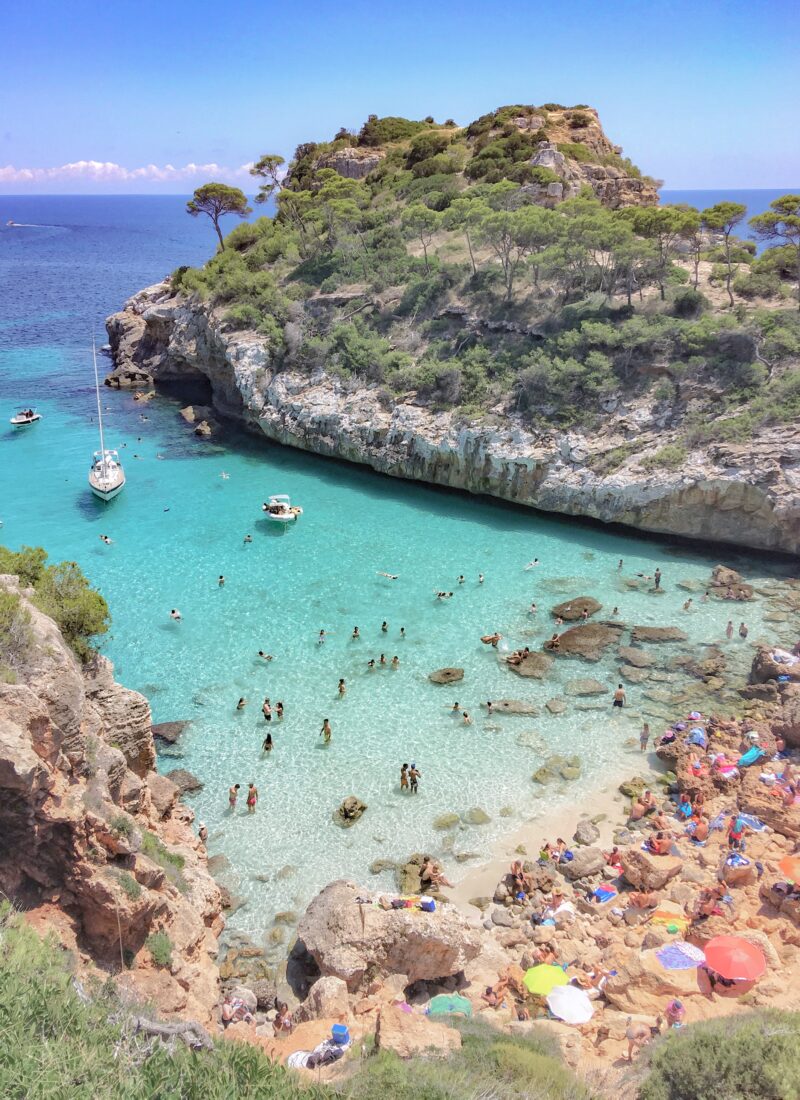

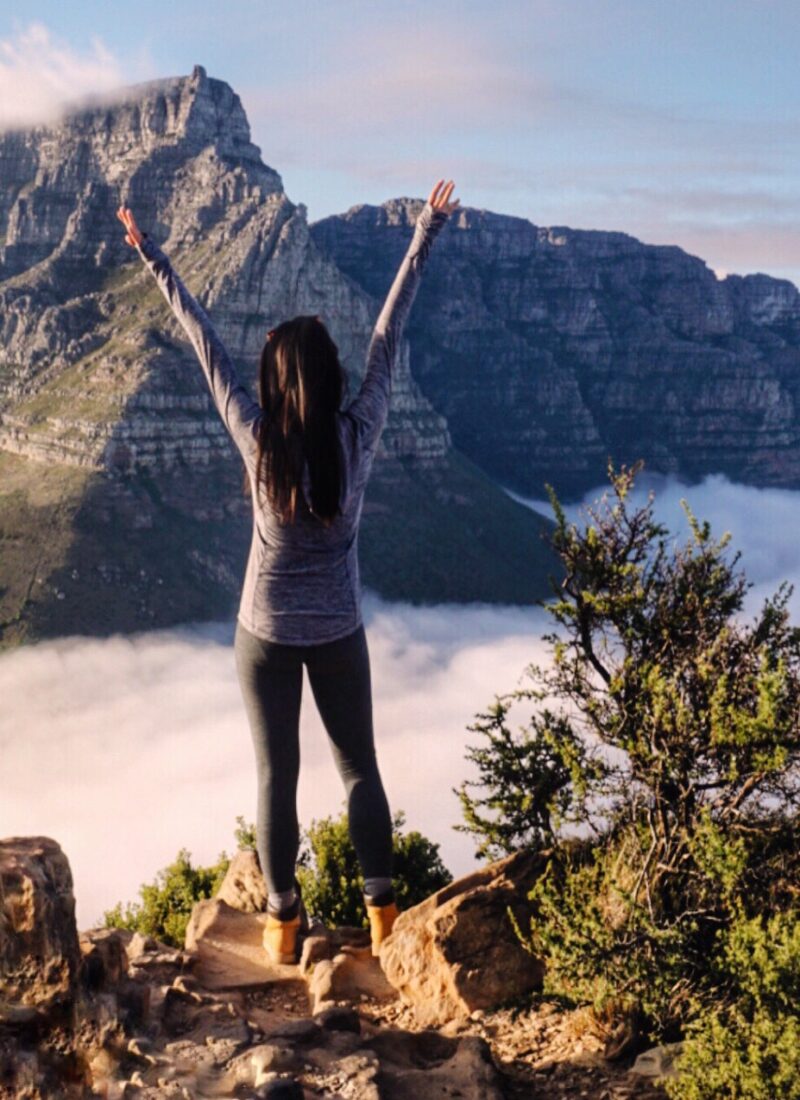
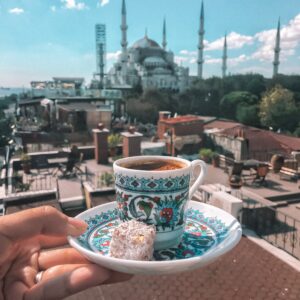

Leave a Reply